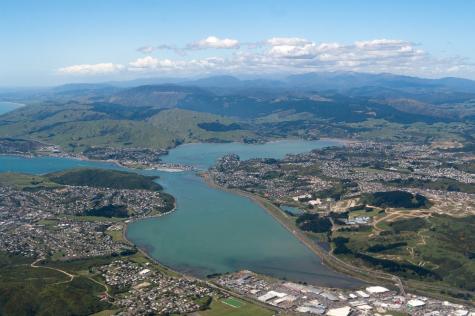
Porirua – The mauri and health of Porirua Harbour near Wellington is to be restored.
Porirua Harbour is the largest estuary in the lower North Island and was once plentiful with pipi, mussels, oysters and tuna.
Porirua City Council, Ngāti Toa and Sustainable Coastlines will receive $3 million from the Environment Ministry’s Jobs for Nature programme over five years towards their restoring the harbour.
The catchment faces pressure from sediment and contaminants entering its waterways. Large-scale developments, both urban and rural, are having an impact on the sensitive ecology and wildlife in the streams and harbour.
Over half of the wetland bird species recorded in the harbour are either threatened or at risk, and a number of particularly rare species nest on the ground, so predator control is critically important for these birds.
The project will see 30 full-time equivalent roles created, close to 630,000 plants planted, 92 hectares of riparian planting, 20km of riparian fencing and 880 hectares of plant and pest control.
The funding will support the integrated catchment management plan developed by Porirua City Council and its partners. This will allow riparian planting, education and community capacity building to be significantly accelerated.
The name Porirua is derived from the maori parirua meaning twin flowings of the tide. The two water systems of the harbour, the Pauatahanui Inlet and the Onepoto Arm, were once kai moana ecosystems that supported a bountiful supply of fish such as sole and cod, eels and sting rays, seals, penguins, and shellfish such as cockles and pipis.
Maori settled in the Porirua harbour and shore system from at least 1450AD. In addition to the marine species, the harbours were surrounded by rich forests that were the source of many birds including moa. Flax was abundant in the swamps.
Porirua is steeped in history. The great Polynesian explorer Kupe was the first human to see Porirua.
The anchor stone from Kupe’s canoe rested at Ngāti Toa domain for decades and is now housed at Te Papa museum. Kupe is responsible for naming many sites including Te Awarua-o-Porirua Harbour, Mana Island, and Komanga Point.
Photo: Te Awarua-o-Porirua Harbour with an outlet to the sea to the west, the Pāuatahanui arm to the east, and the Onepoto arm to the south (Photo: Aidan Wojtas).

